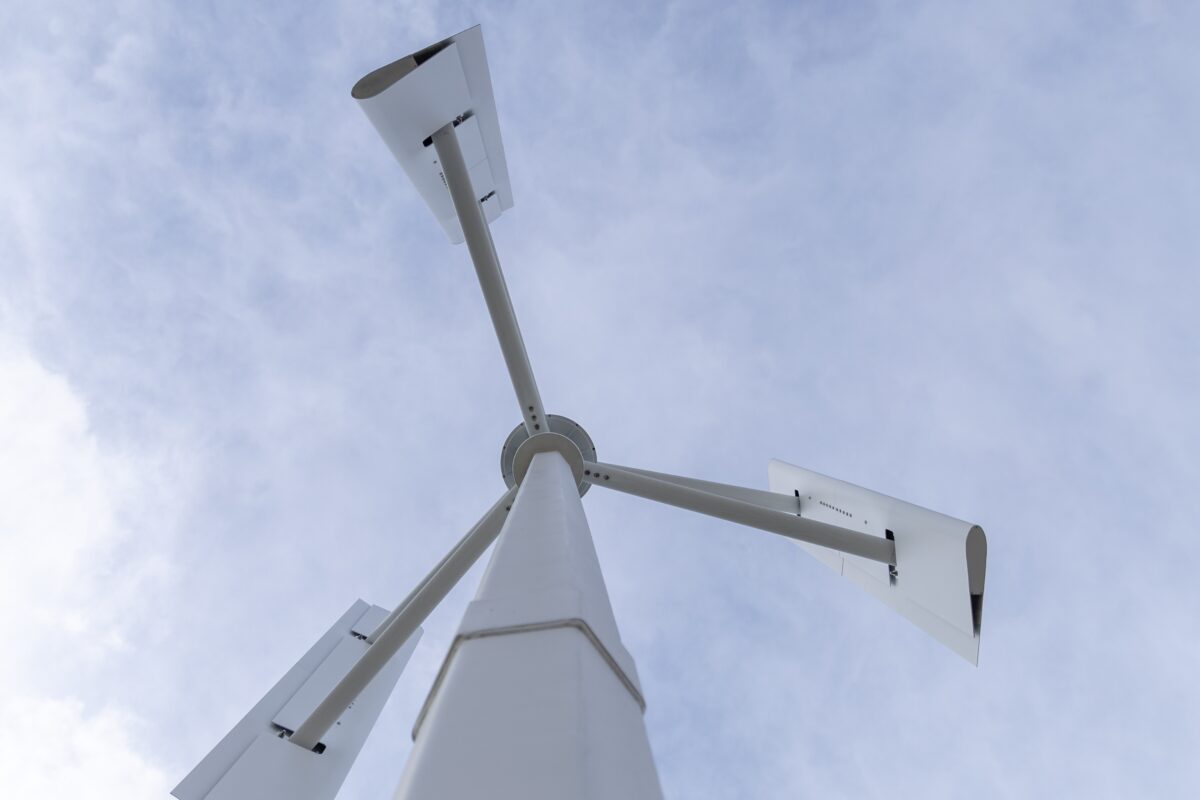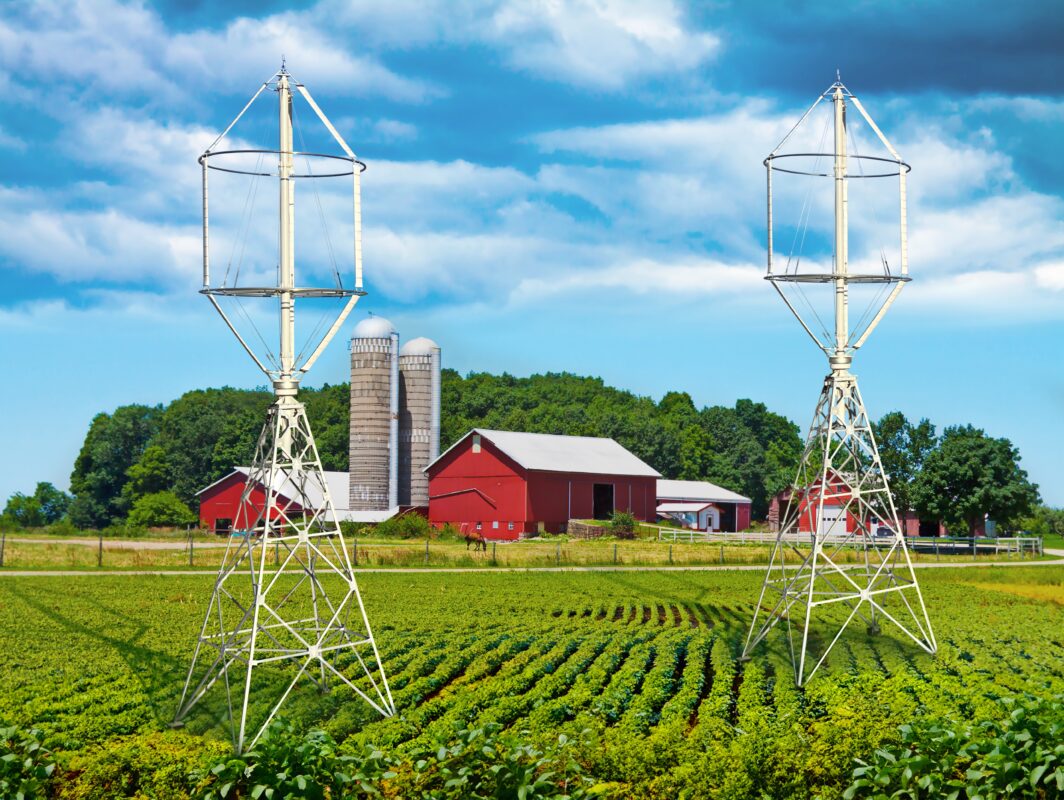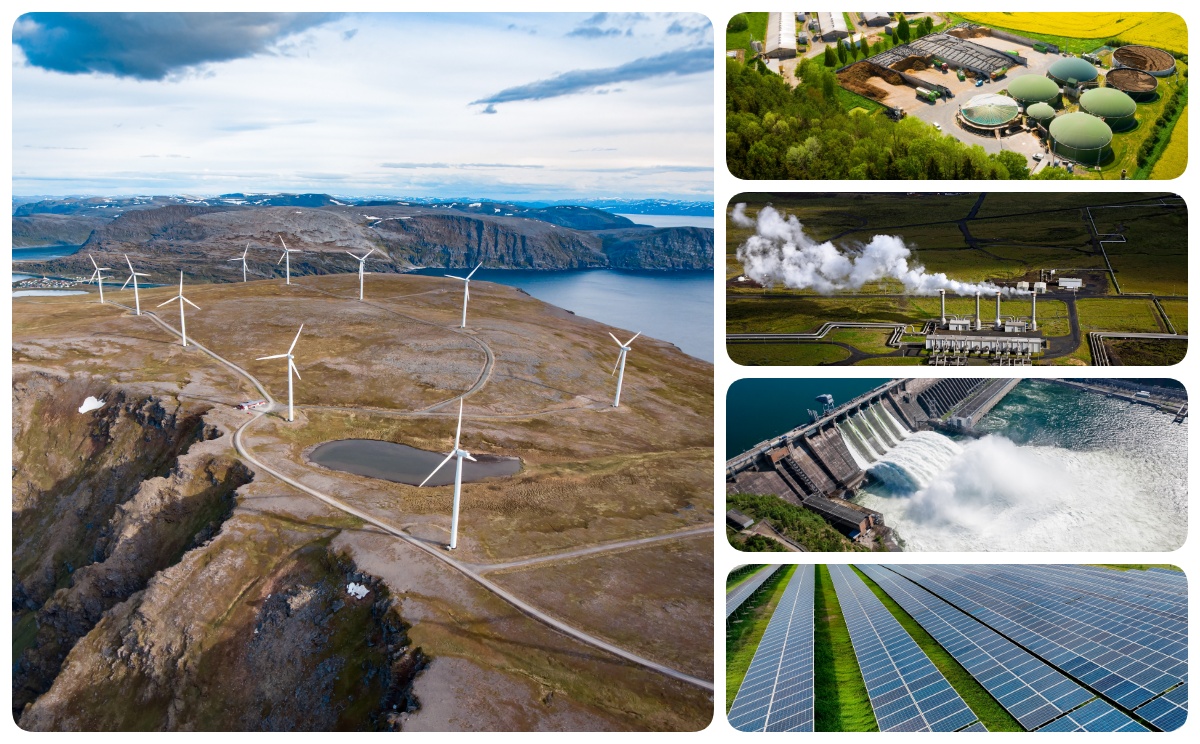When you consider switching to wind energy, you most probably start from comparing the key parameters of wind turbines. That makes a lot of sense: to benefit from a quick return on investment and notable cost reduction, you need to choose a highly efficient device. But the reality might surprise you: the rated output of a wind turbine doesn’t mean the actual amount of generated energy. If you want to know the real efficiency, you need to account capacity factor. Today, we will show you why it’s so important to know it and how it affects the wind turbine’s efficiency.
Wind turbines efficiency: why is it important and how to estimate it?
Overview of wind renewable energy and wind turbines
A wind power plant generates energy from wind. Is it a truism? The process is a bit more complex. To explain it, we need to define what wind energy is. It’s a kinetic energy that is converted into electrical power. The basic component of every wind turbine is a rotor with blades, placed horizontally or vertically. When the wind blows, they start to rotate – this rotating energy is passed on to the generator. There it is transformed into electrical energy. The process of transforming energy is efficient enough only at certain wind speed. In Freen products, depending on the device, the minimum speed is 2,5-3,5 m/s and to reach its maximum power output, they need 11 m/s.
If you look at a product card or website description of a wind power generator, you will see a certain number of kilowatts. Let’s show it on our products: they have capacity of 5, 20 or 55 kW. Does it show how efficient wind turbines are? Not really. To show the efficiency in real-life conditions, you need to know another number: capacity factor.
Considering switching to wind energy? We offer a comprehensive site feasibility survey to evaluate your location, potential ROI, and available incentives – free!
Register here for more information or to speak with one of our experts today!
Importance of capacity factor
Knowing capacity factor is crucial especially for investors who are about to decide between several electricity-generating systems. Not all of them generate the same amount of energy in each period of time. And checking devices’ parameters, like power output, doesn’t provide all the required information – these are only theoretical information that does not always meet real wind turbines efficiency.
Capacity factors of different renewable energy technologies are calculated in the same way; thus, they are easy to compare. They can be used to calculate not only the efficiency of conventional, solar or wind power plants, but also the time needed for return on investment.
Understanding capacity factor
Comparing one capacity factor to another will give you some basic information about the efficiency of both solutions. Even if you don’t know what this factor is, you can base it on your intuition and presume that the bigger the number, the better. But if you really want to delve deeper into this topic, it is worth knowing what capacity factor is and how it is calculated.
What is the capacity factor?
If you want to know how much power a wind turbine does produce, capacity factor will give you reliable, comparable information on that. What is the capacity factor? It’s a ratio of electrical energy produced by an electricity-generating device divided by the amount of energy that would be generated if the device operated with its full power. It is considered in a certain period of time, usually a year.
Sounds complicated? Let’s show the use of capacity factor formula on an example. The rated power of one of the Freen most popular wind turbines is 20 kW. Its maximum energy amount that can be produced per year is 69,6 MWh. It’s been calculated that the average actual power generation is 18 MWh per year. Having these numbers, we can substitute them into the capacity factor formula:
CF = actual output per year / rated output per year
CF = 18 MWh / 69,6 MWh = 26%
It means that the capacity factor of the Freen small wind turbine is 26%, although it may vary, depending on the weather conditions in a particular location.

Factors affecting capacity factor
You can compute capacity factor for a single wind turbine (or other renewable energy device, like solar panel) or for the whole wind farm. This is not all – it can even be computed for an entire country. In this case the capacity factor will be a sum of factors of all wind turbines operating in a vast area.
You may now ask: does every wind turbine of the same kind have always the same capacity factor? What if one of them is working in the coastal area, where strong winds occur very often, and another in a place sheltered from the wind? Good question! There are some factors that affect capacity factor, like insolation for solar systems and wind frequency and speed in wind energy systems.
For many years the capacity factor for small wind turbines has been assumed as 35%. The latest research shows that this is just a general number – and some local conditions can affect it in many ways. Seasonal or long-term changes of wind speeds have been noticed in several European countries bordering the North Sea. Evolution of wind patterns over a few years
Influence of wind frequency and speed is obvious, regarding capacity factor. Another one may be, on the contrary, surprising. Capacity factor may be decreased because of shadowing – by which we understand a physical phenomenon: when wind turbines are located close to each other, efficiency of each of them will be lower. The capacity factor will be only about 92% of factor for a wind farm where all devices are located in an optimal distance.
Capacity factor in small wind turbines
As we showed in the example above, the capacity factor of the Freen-20 kW wind turbine is 26%. Is the device efficient enough? To get answer to this question, we should compare small wind turbines capacity factor to factors of other renewable energy sources-based devices.
A typical capacity factor for wind turbines varies between 25 and 45%. The difference between these numbers is quite high – the capacity depends on the wind farm location and parameters of wind turbines.
But, no matter if the factor is closer to 25% or to 45%, it is still larger than the average CF of solar systems. Their actual capacity is quite low – calculations for several solar power plants start from 10% and they rarely exceed 20%.
What’s important and worth mentioning, is the fact that the capacity factor of renewable energy sources-based system are averagely lower than conventional energy systems. The solution with the highest capacity factor is nuclear energy. Why is that so? Because nuclear power plants can work 24 hours per day, 365 days per year. They are not dependent on weather conditions, like solar or wind power plants. Unless their fuel is provided and the components are working properly, they can generate power without interruptions. Thus, there is no deeper sense in comparing CF of solar or wind plants with CF of conventional power plants.
Want to explore wind energy but don’t know where to begin? Our next-generation 20kW wind turbines are perfect for various commercial enterprises! Contact us now to learn more about how wind energy can benefit your business.
Comparison with large wind turbines
How does a power output of a wind turbine affect its capacity factor? Large wind turbines have larger capacity – their manufacturers declare bigger amounts of energy they can generate. This is because of the larger blades and higher hubs. But does the higher nameplate capacity automatically mean higher capacity factor?
The answer is quite simple and logical. To calculate the factor, you need to divide the actual capacity with the capacity placed on a nameplate. It works in the same way with small wind turbines and the large ones. If you divide, for example, 18 kW of produced energy with 20 kW of potential energy and 1,8 MW with 2 MW, the result will be the same.
As you see, in general, large wind turbines have higher capacity – the one shown on the nameplate. But this not always will mean a higher capacity factor and better performance. If the weather conditions are poor: winds are rare and with low speeds, a large wind turbine will not be able to generate as much power as it could in better conditions. Its capacity factor will be then quite low.
It’s obvious that large wind farms generate more energy – thanks to turbines blades and hubs size. But it not always results in larger capacity factor. What seems to be more important in this context, is choosing the right place for a wind power plant: with sufficient wind speeds and no natural obstacles.
Impact of wind speeds and location
Is it possible to make the capacity factor 100%? Probably not. Output power is just a theoretical number, calculated for perfect conditions – frequent winds with high speed. These conditions are difficult to meet in real nature.
You can, however, get closer to the ideal by choosing the right location for a wind farm. And it is worth doing it!

Capacity factor and efficiency of small wind turbines: now and in the future
Will climate changes affect presence, consistency and speed of winds globally? We can presume that strong winds will be more frequent, but also harder to predict.
What do we know already about possibilities of increasing the capacity of small wind turbines and large wind farms? And what can we do about it in the future? Time for a short conclusion!
Key takeaways of efficiency
Making comparisons of different renewable energy sources systems based only on power output provides you with only basic information about efficiency and time of return on investment. What you need to know is the real efficiency–not calculated in laboratory conditions, but locally.
There is also one thing you need to take into account, concerning the capacity factor – it changes over time! The ratio of actual generated energy compared to the maximum possible output will become lower and lower – those changes show a device’s utilization degree. When you calculate profitability of investing in wind energy, think of decreasing capacity factor in the following years.
This is not specific only for wind turbines. All electricity-generating devices wear out over time. You can, however, slow down this process, by choosing high-quality components and maintaining them properly.
Future prospects for small wind turbines
Wind turbines power outputs have increased in the last years – thanks to new technologies and changes in designing the devices. Will those innovations affect the capacity factor? The future prospects for small wind turbines should focus on designing blades and rotors that will be able to pick up energy also from wind at low speeds. This means, of course, dealing with some challenges: searching for new ways of manufacturing, transport, installation. But, thanks to innovations in small wind turbines design, it will be possible to provide benefits of wind energy also to low wind speed regions.






